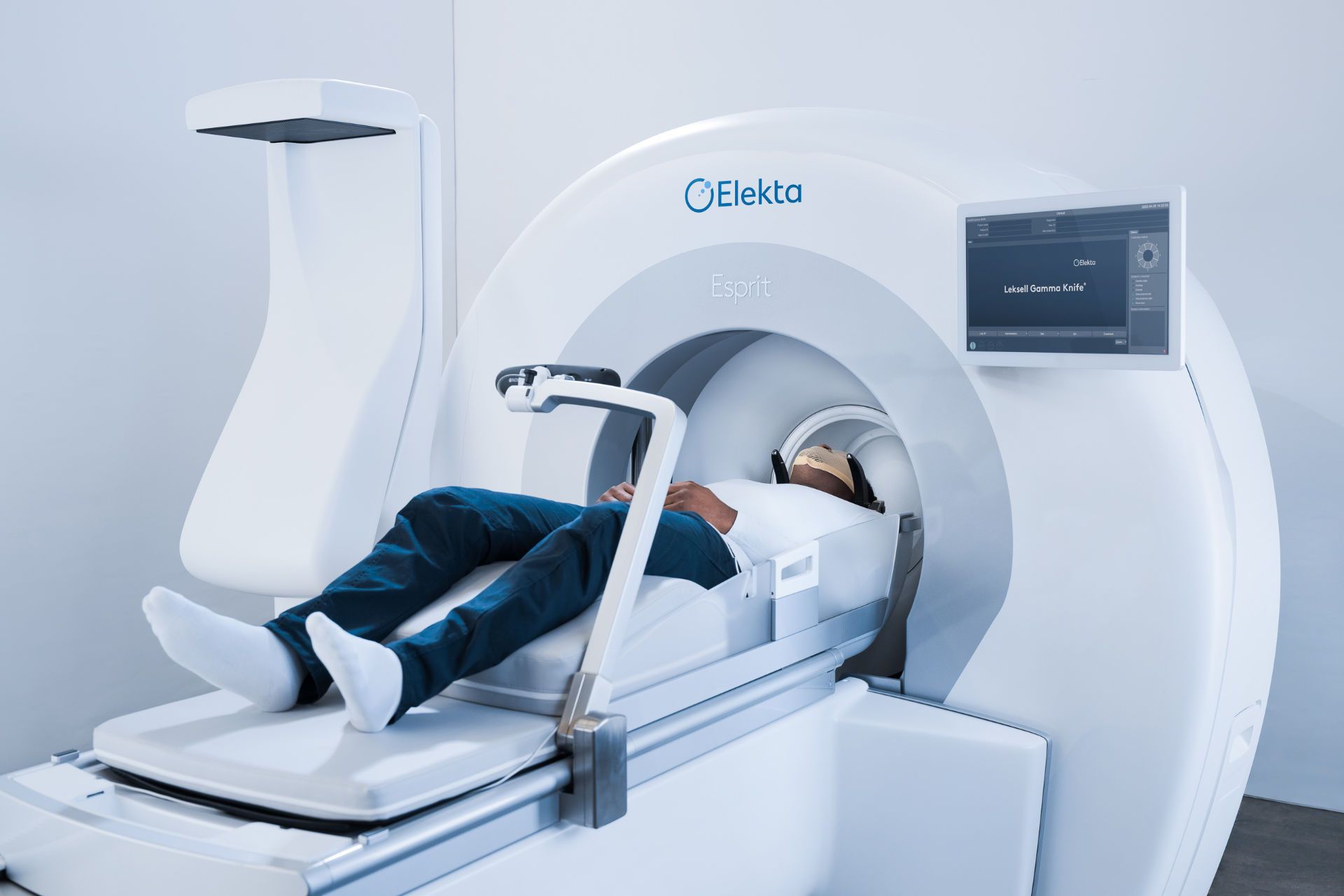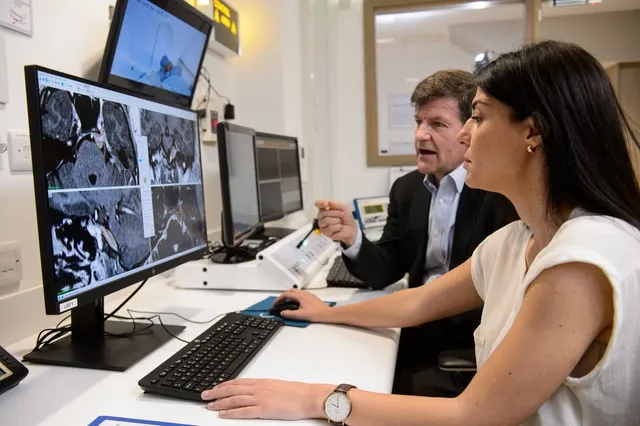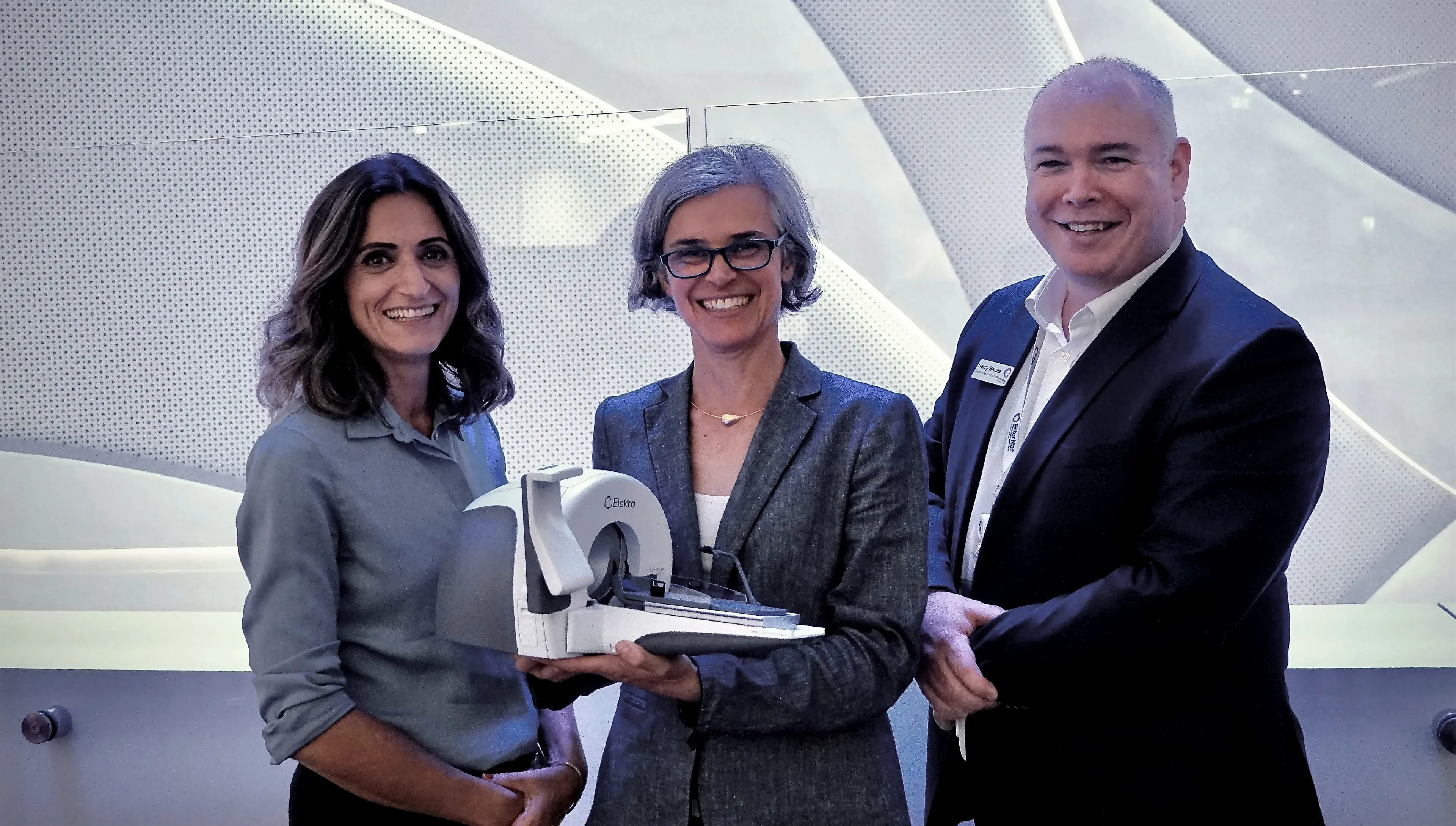Romanian hospital introduces multi-session radiosurgery with Elekta Esprit acquisition
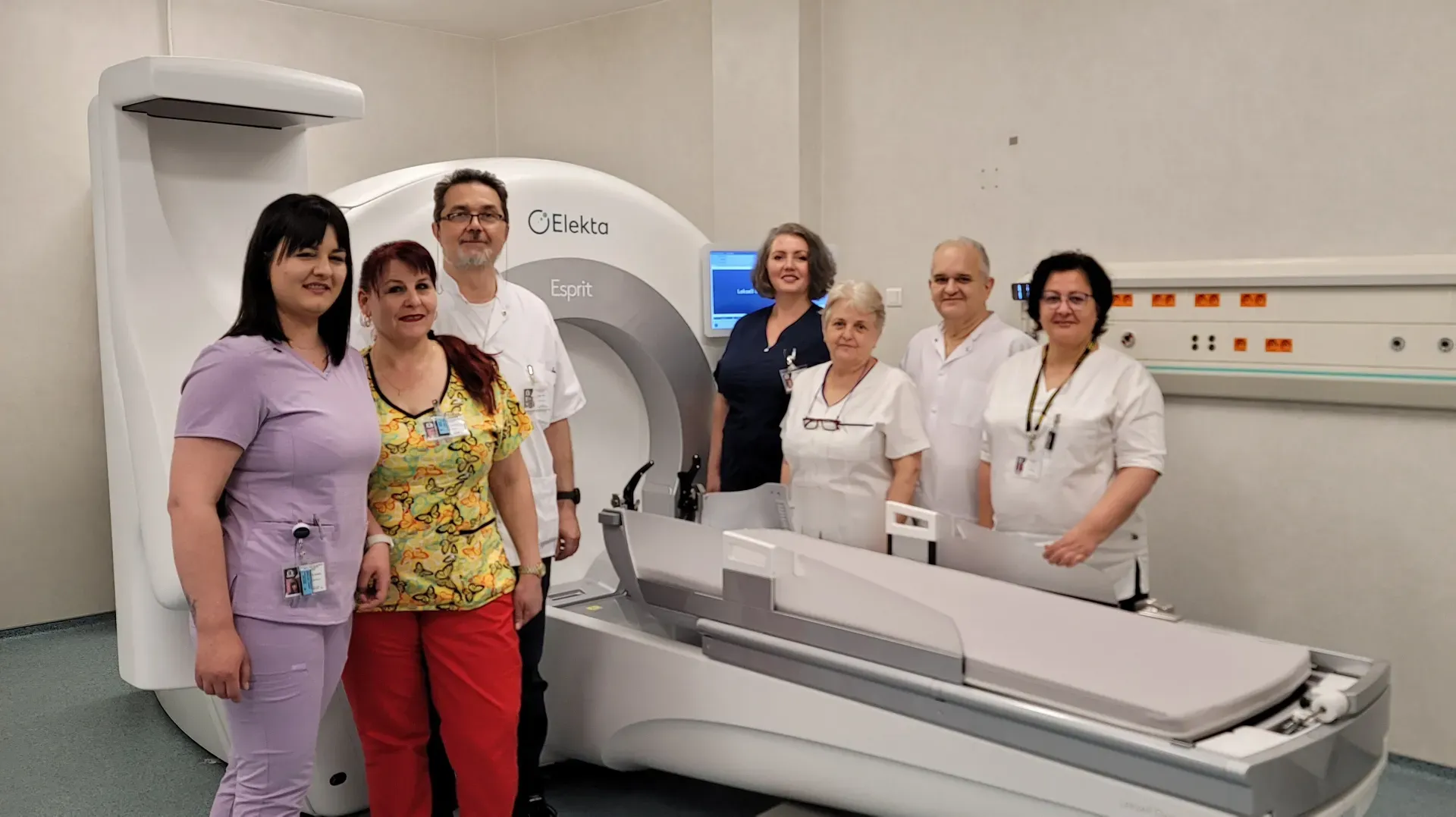
System’s integrated imaging workflow and Lightning planning enable mask-based, staged treatments for large tumors in sensitive brain regions
Neurosurgeons at Bagdasar-Arseni Emergency Clinical Hospital (Bucharest, Romania) began using Leksell Gamma Knife® technology in 2004 with the model 4C platform and upgraded in 2018 to Leksell Gamma Knife® Perfexion™. Last November, Bagdasar-Arseni became the first medical center in Central Eastern Europe to acquire the latest generation Gamma Knife, Elekta Esprit. With its integrated cone beam CT imaging technology, Esprit gives clinicians here the flexibility to implement multi-session radiosurgery for large targets near eloquent structures and for tumors that would be too risky to remove surgically.
Benign indications – such as meningiomas, pituitary adenomas and glomus tumors – represent over 50 percent of Bagdasar-Arseni’s Gamma Knife volume. The vast majority of these are treated in a single session, as are malignant lesions, such as small metastases, which make up another 40 percent of the hospital’s radiosurgery caseload. However, very large skull base meningiomas, which are close to or compressing the brain stem or optic pathways, are unsuitable for single-session radiosurgery.
“For these patients the arrival of Esprit was the solution.”

“For these patients the arrival of Esprit was the solution,” says Fery Stoica, MD, Senior Neurosurgeon and Head of the Gamma Knife Radiosurgery Department at Bagdasar-Arseni, which treats about 40 patients each month and is closing in on 8,000 Gamma Knife patients treated since 2004. “In most cases, the volume of these benign tumors doesn’t intimidate us. They can be treated with single-session Gamma Knife radiosurgery and over the last 20 years we’ve had good results in over 90 percent of the cases.
“On the other hand, if there are many cranial nerves close to the tumor or the lesion is too near the optic chiasm, a high dose single-session risks damage to these structures,” he continues. “So, proper mask-based hypofractionation and image guidance will solve the problem,” he continues. “You will get a very good BED [biologically effective dose] to the target with three fractions and not exceed the toxic dose for organs-at-risk, such as the optic pathways.”
Recent cases highlight indispensability of Esprit
In the last week of March 2024, an 11-year-old girl presented with a recurrent medulloblastoma. Several years ago, the patient had undergone surgery and conventional radiotherapy to treat the original tumor, and two years later experienced two CSF (cerebrospinal fluid) disseminations that resulted in the tumor’s return. She was treated with the Perfexion system with excellent results, but a new CSF dissemination in the hypothalamus brought her back to Bagdasar-Arseni for treatment with Esprit.
“The hypothalamus is among the most radiosensitive parts of the brain and the CSF metastasis was really close to the optic chiasm,” Dr. Stoica observes. “In this condition you can’t treat with a single session and the patient had already had the full dose of radiotherapy, so no one would fractionate her with EBRT. Consequently, the only option was multi-session radiosurgery with Esprit.”
The patient received a total dose of 18.5 Gy, approximately 6.2 Gy per session, over three consecutive days with less than 5 Gy on the optic pathways.(Figure 1)

In another late March 2024 case, a 34-year-old man presented with a large glomus jugulare tumor, a rare growth that arises in the jugular foramen of the temporal bone near the skull base.
“The tumor was about 46 cubic centimeters in size and exerting local pressure on the brain stem,” he recalls. “Surgery is a poor option for this kind of tumor because they’re so well-vascularized that the patient could lose two to three liters of blood during the procedure even if you work fast to remove it.
“Single-session radiosurgery also is risky,” Dr. Stoica adds. “The guidelines indicate that you need to prescribe at least 14 Gy on the periphery, but with such a large volume and nearly the entire brain stem compressed and distorted by the tumor, you could harm the patient with one high-dose session.”
This patient also received three fractions – 7.5 Gy per session, for a total dose of 22.5 Gy – the BED in three sessions roughly equivalent to approximately 14 Gy at the periphery, with just half the dose to the brain stem. (Figure 2)
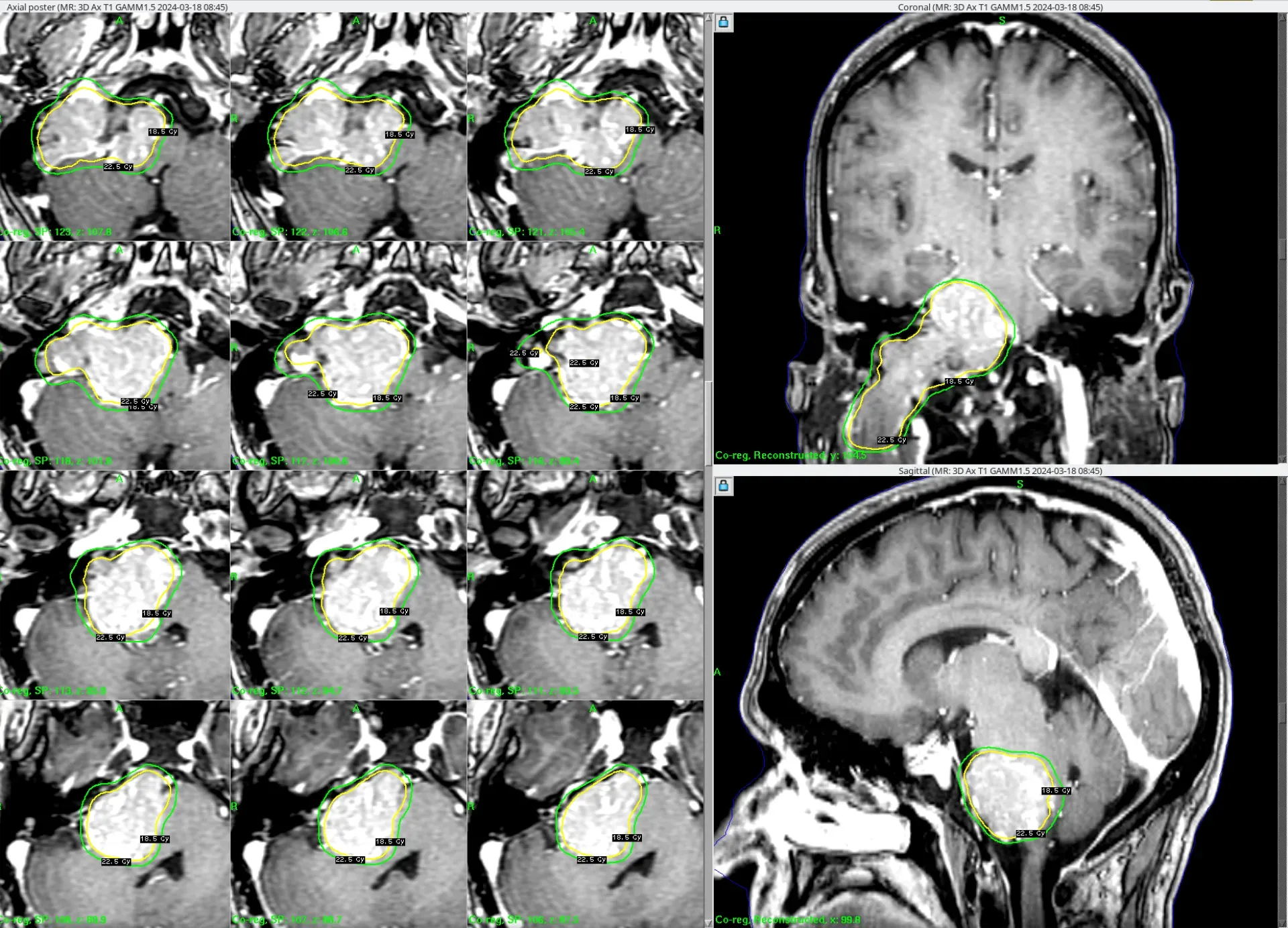
Both patients tolerated Esprit radiosurgery very well and did not experience any adverse effects or discomfort. They were discharged in exactly the same condition in which they were admitted.
Lightning planning streamlines workflow
Bagdasar-Arseni physicians have been using the Leksell Gamma® Knife Lightning treatment plan optimizer since late 2021. The planning system enables them to rapidly and automatically generate plans for single or multiple targets, which increases automation and speed in the radiosurgery workflow, while also ensuring a personalized plan for each patient’s needs.
“We are using 85 percent of the plans that Lightning proposes with no modifications.”
“The workflow is much shorter and smoother,” he notes. “We are using 85 percent of the plans that Lightning proposes with no modifications. We are very happy with Lightning – it’s been quite useful.”
With the Esprit acquisition the medical center received the latest Lightning version of the plan optimizer.
“In less than a minute, Lightning will create an excellent plan that I can move forward with quickly," Dr. Stoica asserts. I just have to check the physics and coverage and take the time beforehand to carefully contour the target and OARs so that Lightning has all the information it needs.”
He recalls that to obtain a suitable plan with GammaPlan on the Model 4C took him at least 30 to 40 minutes for a complex target.
“Now I receive a better plan in 20 seconds or so,” he says. “Lighting has been more useful with Esprit, because with the single-session Perfexion treatments, the plan optimizer tended to propose isodoses that were too high for large tumors or AVMs. But with Esprit and multi-session radiosurgery, Lightning knows how to do it safely and usually proposes exceptional plans with excellent coverage and OAR sparing.”
A productive, efficient service
Working just one shift and a Gamma Knife Radiosurgery Department staff of seven – two physicians, three nurses, a physicist and an administrative support person – the radiosurgery service is a busy operation. However, due to Esprit’s fresh cobalt-60 sources - making treatment times much faster - and rapid Lightning planning, the team’s productivity has increased significantly.
“Staff satisfaction is excellent. Going home at one or two o’clock – not six or seven o’clock – has made our care team very pleased.”
“Staff satisfaction is excellent,” Dr. Stoica says. “Going home at one or two o’clock – not six or seven o’clock – has made our care team very pleased. Everything gets going much faster and more smoothly than before Esprit.
“In addition, patient comfort is much better now, because treatment delivery times are now less than half with Esprit,” he continues, “and the patients also appreciate the comfort of the Vantage frame in cases in which we can use it, and we like the accuracy of Vantage versus the G-frame. Most importantly, for patients for whom surgery or single-session Gamma Knife radiosurgery is unfeasible, multi-session treatments with Esprit provides them with an excellent therapy option. All these benefits together have really had a profound impact on our department and our patients.”
Click here to learn more about Elekta Esprit.LARLGK240503

